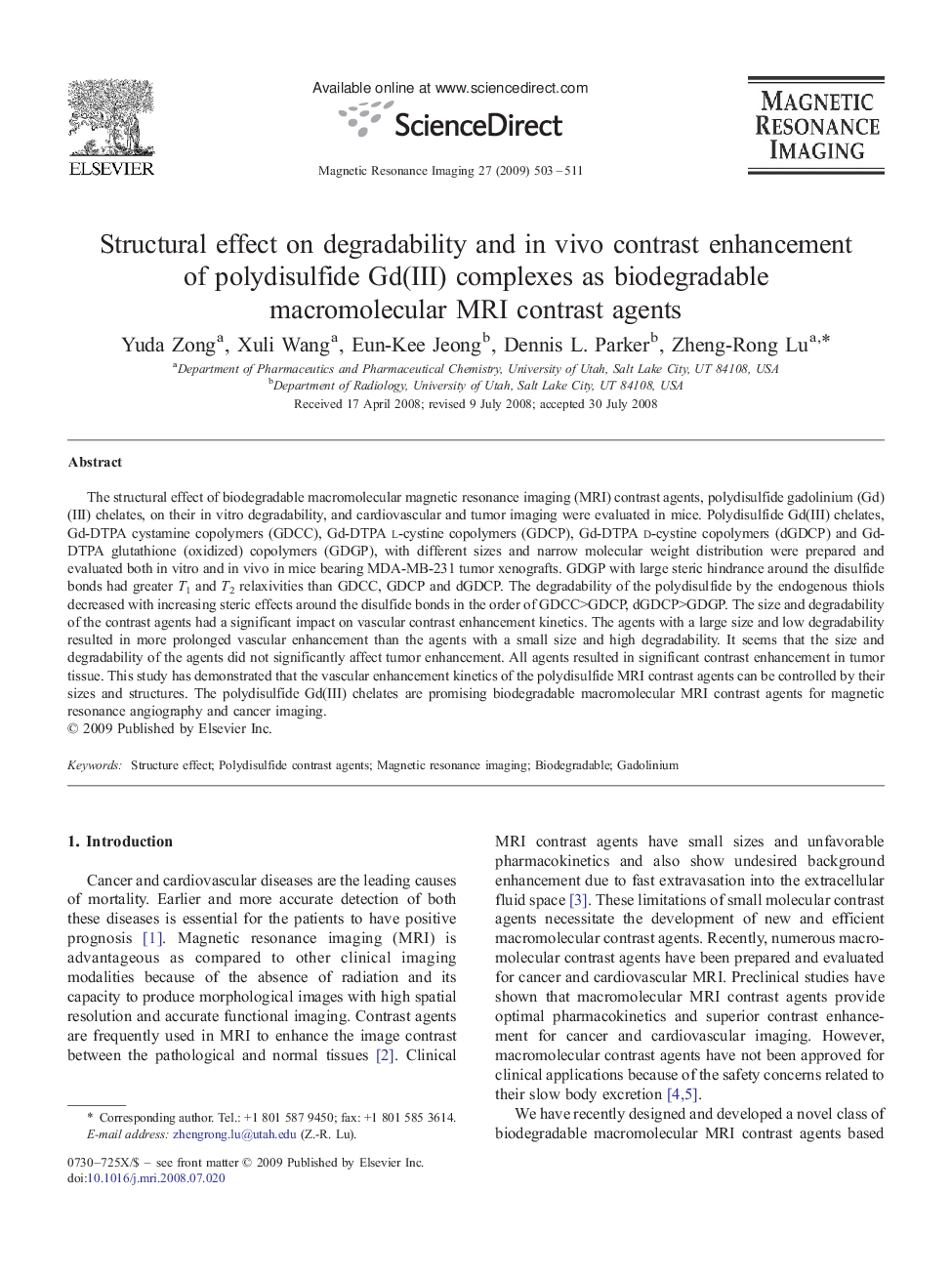| Article ID | Journal | Published Year | Pages | File Type |
|---|---|---|---|---|
| 1807197 | Magnetic Resonance Imaging | 2009 | 9 Pages |
The structural effect of biodegradable macromolecular magnetic resonance imaging (MRI) contrast agents, polydisulfide gadolinium (Gd)(III) chelates, on their in vitro degradability, and cardiovascular and tumor imaging were evaluated in mice. Polydisulfide Gd(III) chelates, Gd-DTPA cystamine copolymers (GDCC), Gd-DTPA l-cystine copolymers (GDCP), Gd-DTPA d-cystine copolymers (dGDCP) and Gd-DTPA glutathione (oxidized) copolymers (GDGP), with different sizes and narrow molecular weight distribution were prepared and evaluated both in vitro and in vivo in mice bearing MDA-MB-231 tumor xenografts. GDGP with large steric hindrance around the disulfide bonds had greater T1 and T2 relaxivities than GDCC, GDCP and dGDCP. The degradability of the polydisulfide by the endogenous thiols decreased with increasing steric effects around the disulfide bonds in the order of GDCC>GDCP, dGDCP>GDGP. The size and degradability of the contrast agents had a significant impact on vascular contrast enhancement kinetics. The agents with a large size and low degradability resulted in more prolonged vascular enhancement than the agents with a small size and high degradability. It seems that the size and degradability of the agents did not significantly affect tumor enhancement. All agents resulted in significant contrast enhancement in tumor tissue. This study has demonstrated that the vascular enhancement kinetics of the polydisulfide MRI contrast agents can be controlled by their sizes and structures. The polydisulfide Gd(III) chelates are promising biodegradable macromolecular MRI contrast agents for magnetic resonance angiography and cancer imaging.
